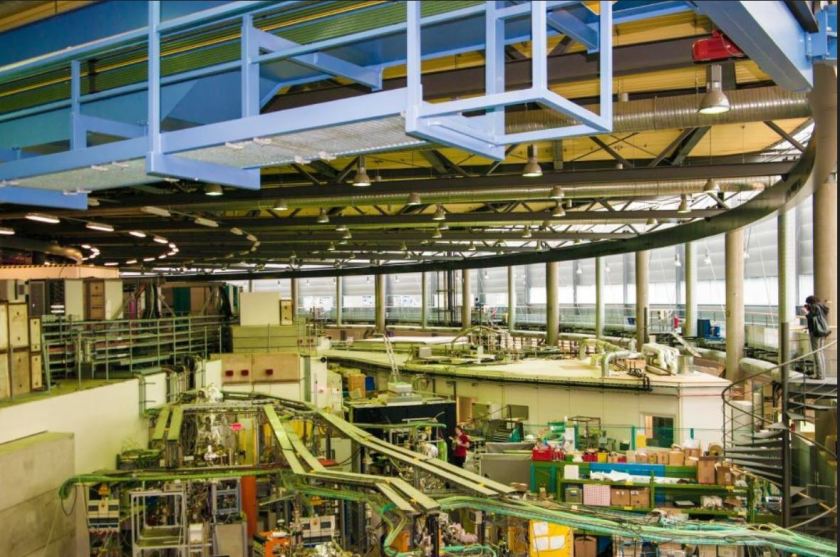Shutdown BESSY II: work has started

The experimental Hall of BESSY II. HZB / D.Butenschön
As of 30 July 2018, BESSY II will be down for several weeks. In the summer shutdown, important components in the storage ring tunnel will be replaced and overhauled. The first conversion work for the BESSY VSR project also begins. Upgrading BESSY II into a variable-pulse-length storage ring (BESSY-VSR) will provide unique experimental conditions for researchers worldwide. The shutdown lasts until 30 September 2018, and user operation will recommence on 30 October 2018.
While the ring is down, the HZB employees will be completely modifying the multipole wavelength shifter, the EDDI beamline and the radiation protection hutches. This space will be needed for installing the cold supply for the superconducting cavities in the storage ring. These are key components in the creation of BESSY VSR. Keeping them cold, however, requires an elaborate infrastructure, which is to be built up in the experimental hall over the next two years.
There is even more that has to be done during this shutdown: colleagues from the Institute for Accelerator Physics are constructing a diagnostics beamline for BESSY VSR in the vicinity of the EMIL hutch. In addition, the two wavelength shifters will be revised and further components (Landau cavities and a CPMU17) will be installed for the EMIL laboratory. Plus, a laboratory for electrochemical experiments on solid-liquid boundary interfaces (BEIChem) is to be built at BESSY II.
You can take a detailed look at everything that will be going on during the shutdown in the HZB Science Blog
(sz)
https://www.helmholtz-berlin.de/pubbin/news_seite?nid=14869;sprache=en
- Copy link
-
Ernst Eckhard Koch Prize and Innovation Award on Synchrotron Radiation 2025
At the 27th BESSY@HZB User Meeting, the Friends of HZB honoured the dissertation of Dr Enggar Pramanto Wibowo (Friedrich-Alexander University Erlangen-Nuremberg). The Innovation Award on Synchrotron Radiation 2025 went to Prof. Tim Salditt (Georg-August-University Göttingen) and Professors Danny D. Jonigk and Maximilian Ackermann (both, University Hospital of RWTH Aachen University).
-
Synchrotron radiation sources: toolboxes for quantum technologies
Synchrotron radiation sources generate highly brilliant light pulses, ranging from infrared to hard X-rays, which can be used to gain deep insights into complex materials. An international team has now published an overview on synchrotron methods for the further development of quantum materials and technologies in the journal Advanced Functional Materials: Using concrete examples, they show how these unique tools can help to unlock the potential of quantum technologies such as quantum computing, overcome production barriers and pave the way for future breakthroughs.
-
Peat as a sustainable precursor for fuel cell catalyst materials
Iron-nitrogen-carbon catalysts have the potential to replace the more expensive platinum catalysts currently used in fuel cells. This is shown by a study conducted by researchers from the Helmholtz-Zentrum Berlin (HZB), Physikalisch-Technische Bundesanstalt (PTB) and universities in Tartu and Tallinn, Estonia. At BESSY II, the team observed the formation of complex microstructures within various samples. They then analysed which structural parameters were particularly important for fostering the preferred electrochemical reactions. The raw material for such catalysts is well decomposed peat.
